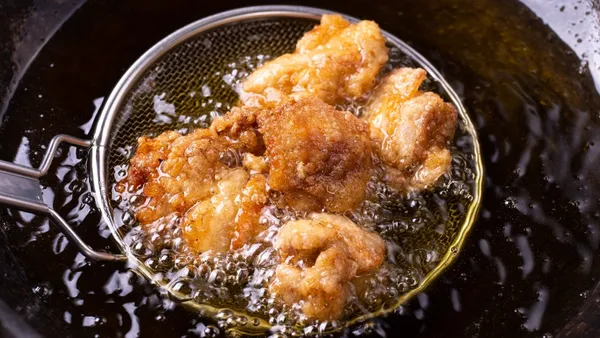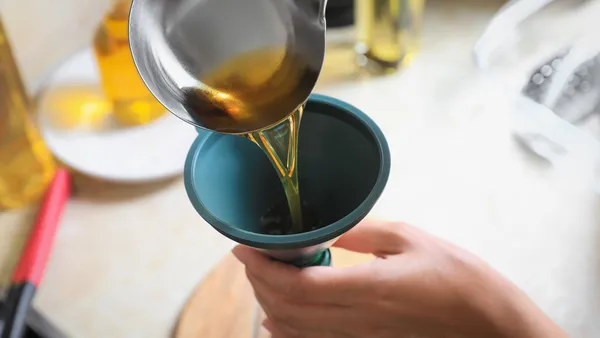Table of Contents
"Reusing frying oil is a common practice, but it's crucial to do it right. At tauhuichiban, we explore how you can safely reuse canola oil, ensuring both your health and budget are well-cared for. This article delves into the proper techniques for reusing this versatile oil, highlighting when it's time to discard used oil and how to maximize its lifespan."
Aspect | Details |
|---|---|
Proper Strain Method: | 'Use cheesecloth after cooling' |
Signs of Degradation: | 'Darkening, odor changes' |
Ideal Reuse Frequency: | '3-4 times for battered foods; 8+ times for cleaner items' |

Safely Reuse Canola Oil: Tips And Tricks For Optimal Frying
How to Safely Reuse Canola Oil
Straining: Your Oil's Best Friend
Imagine your canola oil is like a swimming pool. After a pool party, you skim out the leaves and debris, right? Same goes for your oil! After each fry-up, especially those with breaded goodies, it's time to give it a good clean. Let the oil cool down completely – we don't want any hot oil accidents! Then grab a fine-mesh strainer or even cheesecloth and carefully pour the oil through it. This catches all the little bits that can make your oil go bad faster.
Know When to Say Goodbye
Ever smelled something a little funky and knew it was past its prime? Canola oil can be like that too. If it starts to look really dark and murky, almost like a muddy pond, or if it smells off, it's time to say goodbye. Also, if you're seeing smoke even when you're not heating it up, that's a big red flag. Think of it like this: would you want to jump into a murky, smelly pool? Probably not! Same goes for your food and old oil.
Give Your Oil a Helping Hand
Here's a neat trick: you can actually stretch the life of your canola oil even further! After a few uses, try adding a bit of fresh canola oil to the mix. It's like giving your old oil a little boost of energy! This can help keep it from breaking down too quickly and give you a few more delicious fries out of it.

How to Safely Reuse Canola Oil
The Risks of Reusing Canola Oil
Reusing canola oil might seem like a money-saver, but it comes with risks. Imagine if you kept wearing the same socks without washing them – yuck, right? Over time, oil breaks down and can turn into something not so good for your body. It can get all smoky and start smelling weird, which isn't just gross but also unhealthy. This happens because high heat changes the oil's chemistry, making it produce stuff that could harm your health.
Issue | Effect |
|---|---|
Oil Degradation | Produces harmful byproducts |
High Heat Use | 'Alters oil chemistry' |
Repeated Use | 'Increases health risks' |

The Risks of Reusing Canola Oil
When it comes to maximizing the lifespan of canola oil, a little TLC goes a long way. Think of it like taking care of a car - regular maintenance keeps it running smoothly for years to come! For your canola oil, that means storing it in a cool, dark place, away from direct sunlight and heat sources. You can also try freezing it to slow down the oxidation process, which can make it go bad faster.
Storage Tips | Benefits |
|---|---|
Store in cool, dark place | Slows down oxidation |
Freeze the oil | Preserves flavor and quality |
Another important thing to keep in mind is not to mix different types of oil in the same container. This can cause the oils to break down faster and affect the flavor of your dishes. It's like trying to mix oil and water - they just don't get along! Instead, use separate containers for each type of oil to keep them fresh and happy.
- Don't mix different oil types
- Use separate containers for each oil
Final Thought
"Understanding how to safely reuse canola oil not only helps in reducing kitchen waste but also ensures that your meals remain healthy and delicious. By following the guidelines outlined here at tauhuichiban, you can confidently extend the use of your cooking oils without compromising on quality or safety."